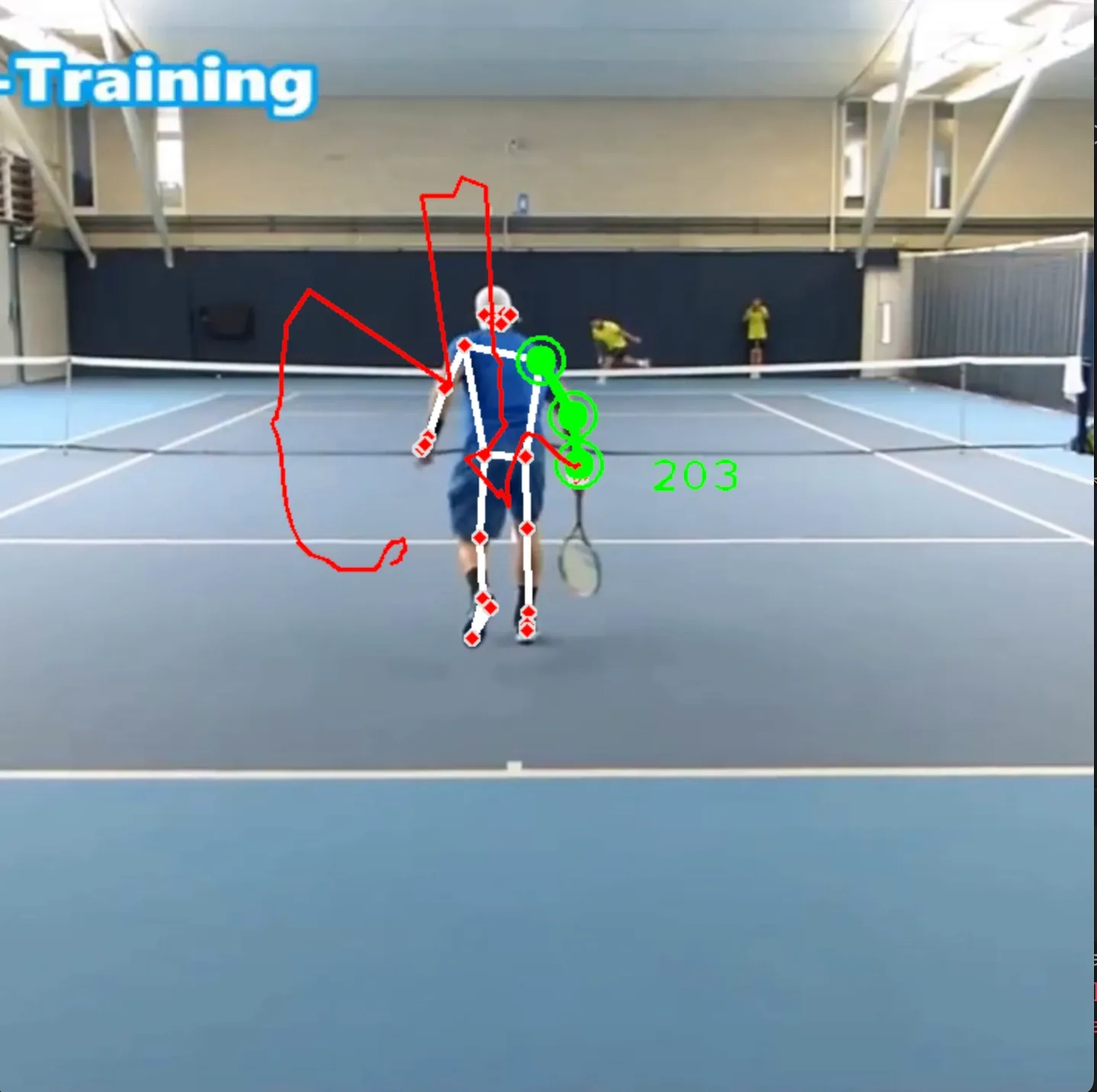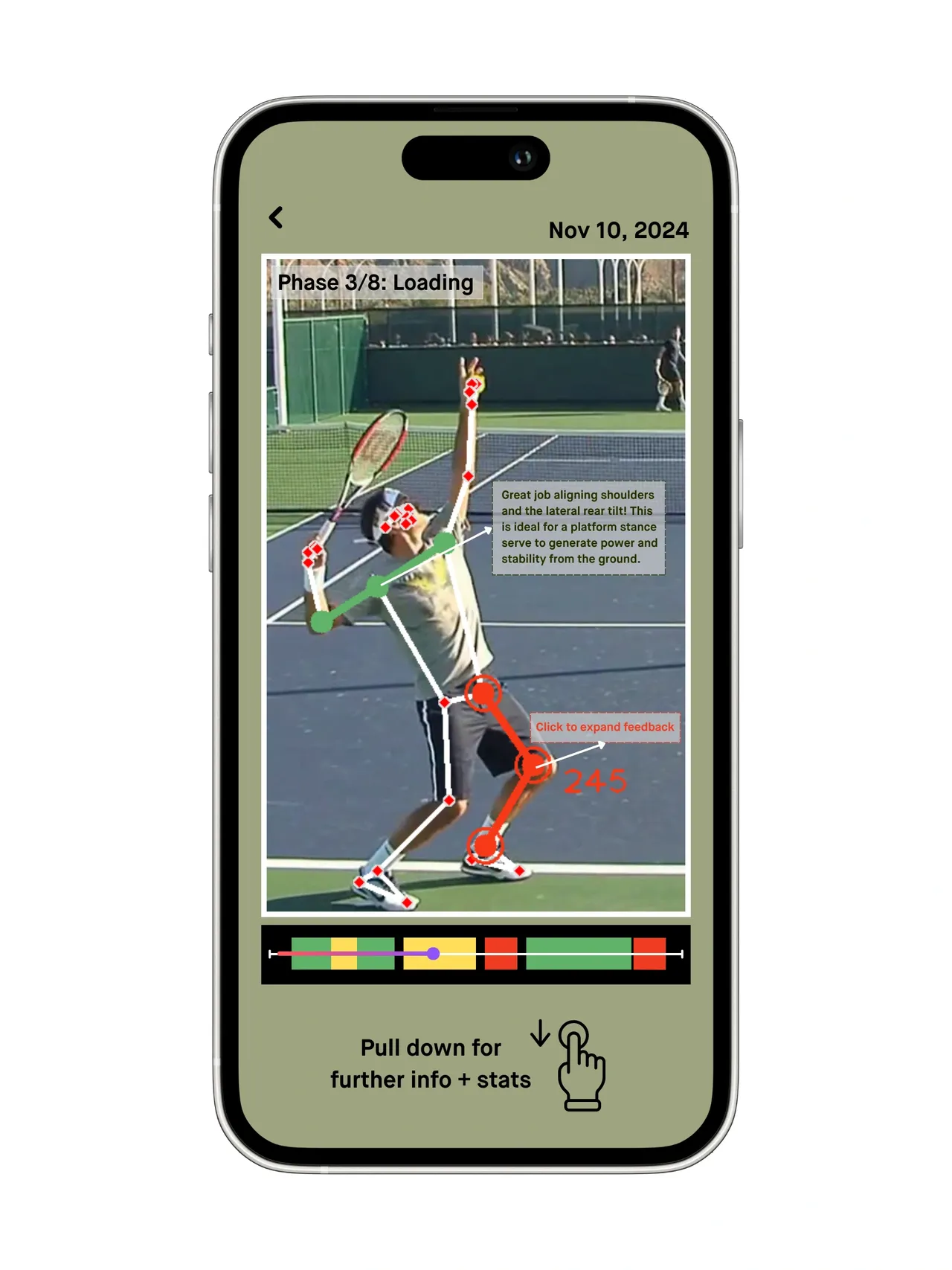In today's modern sports landscape, athletics is being shaped by advances in technology, specifically artificial intelligence due to its ability to analyze complex data and metrics instantaneously. Unfortunately, despite these tech innovations, not much is being done to help underprivileged athletes realize their potential. Many talented athletes are inhibited by their lack of resources, including access to quality sports coaching and advice to improve their skills.
Our mission here at Sports.AI is to revolutionize sports coaching and empower athletes globally. We’re leveraging cutting-edge AI technology to offer affordable, personalized, and expert-level coaching to athletes around the world, helping them to elevate their performance, wherever they are, no matter their situation. We're talking about a built-in, personal coach in an app on your phone. Simply record yourself playing the sport that you love, upload it to our servers, and receive real-time feedback and analysis on your form and shots.
How It Works
Our product implements top-tier AI and ML techniques to provide effective sports coaching. However, in order to provide accurate feedback, we also do extensive research on the biomechanics and kinetic motion behind the athletic movement, shot, or stroke. Let's take a specific use case, analyzing a tennis serve, to give a flavor of our innovative proposed system. Here is a brief overview of the process:
- Serve Type Classification
- Stage Classification (8 stages model)
- Compare user video to "role-model" and key features for this case based on professional players' data
- Pass differences to an interpreter model that determines issues in the motion
- Transfer overall issues to text-based model that proposes solutions
The tennis serve can be classified into three main types: flat, kick, and slice. Further differentiation lies in left vs. right hand dominance, pinpoint vs. platform stance, underhand serve, etc. Our initial models will detect which category the user's video falls into and accordingly setup the role model case for that category. This is important to provide relevant feedback to the user; for example, analyzing a left-handed player's serve by comparing it to right-handed serve data will not be too accurate nor helpful.
The next step is our coaching process is breaking up the tennis serve into stages, specifically the eight stages as explained in this paper. This is important as it lays the structure for the coaching. It offers a simple, quick basis for feedback; if one of the stages is missing / not detected, then that is an easy starting point of the coaching and analysis. Additionally, it helps us break up the serve motion just like a coach would do, analyzing the serve step-by-step.
After the groundwork for the coaching is laid, we compare the user's video data to our unique role model that was selected previously to provide specific analysis and feedback. We find the key points of human body frame-by-frame in human pose estimation to track the movement of the body across the period of the serve. Then, we extract key similarities and differences with the role model case, which is trained on professional players' data through feature extraction techniques. For each stage, our researchers develop metrics that are critical in order to perform a successful motion or stroke, and then have models learn the patterns behind them. That way, once the models have been trained and understand the patterns for a successful vs unsuccessful serve and can relate it to the pixels of the video, we use it to analyze the user video.
We pass the extracted differences and similarities to an interpreter model which translates them into human language. For example, the model receives data such as "Y-coord of point 26 is 21.0 units above the predicted spot (based on the role-model)" and converts it to "User's right knee point is too high up during the loading stage."
However, you can imagine that feedback in this form is not very helpful, so the final step of the coaching system is using a language model to propose solutions based on the issues from the model above. It will convert data like "User's right knee point is too high up during the loading stage" to "Make sure to bend your leg sufficiently when in the loading phase. This will help you produce power from your legs and ensure a smooth kinetic chain of motion." We finally display these comments on the screen, of course with useful and cool visual elements + diagrams.
Conclusion
At SportsAI, we believe every athlete deserves world-class coaching. Whether you’re just starting out or aiming for elite performance, our platform is built to help you improve.
Join us for an AI-powered sports revolution.

